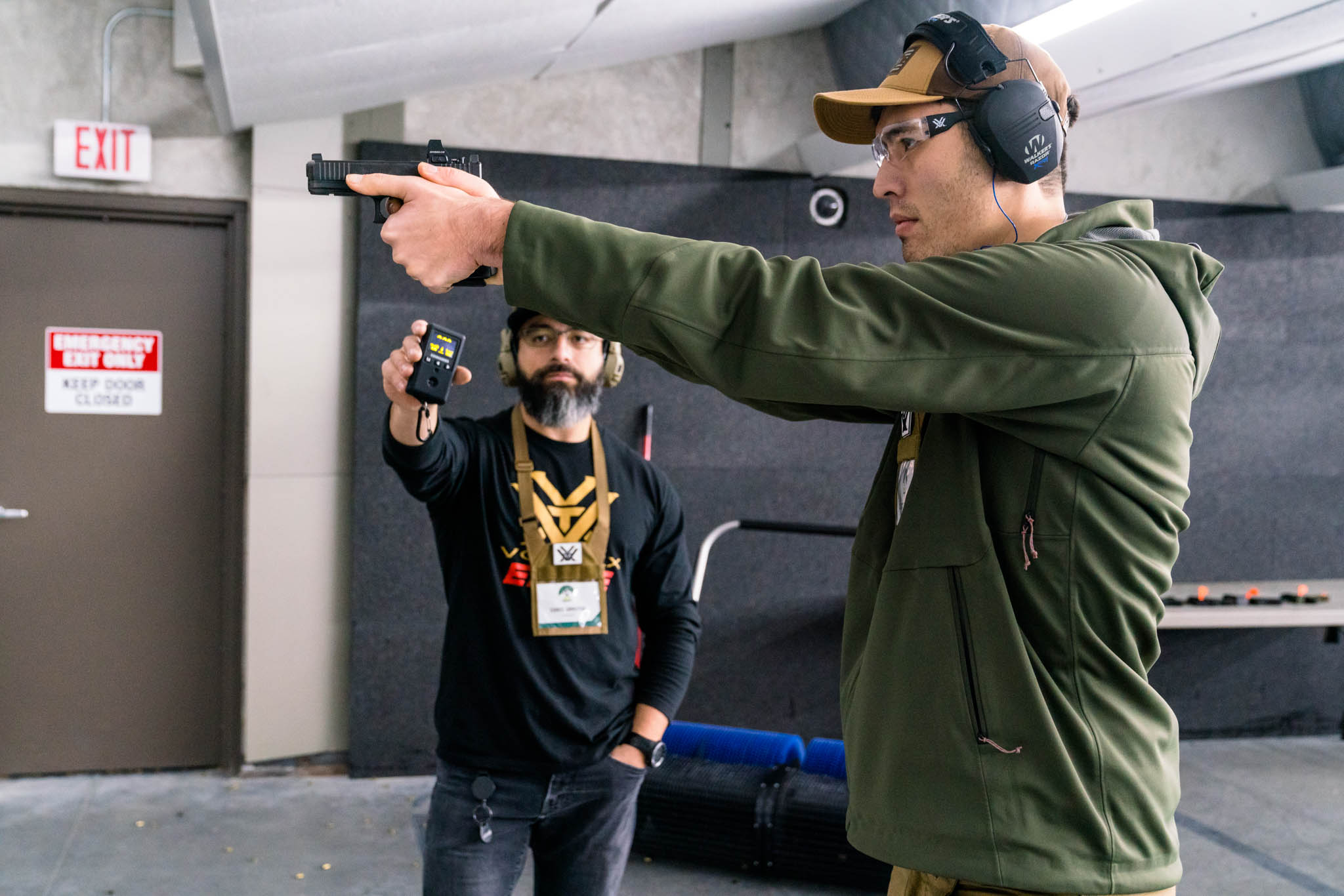We may earn revenue from the products available on this page and participate in affiliate programs. Learn More ›
I interviewed a professional shooter and a former Secret Service agent about choosing the ultimate concealed-carry gun. They offered great insight into how to choose a pistol, but there was one resounding theme in those conversations—gear is secondary to training.
I know gear is fun, but if you want to actually hit what you’re aiming at and shoot with any kind of speed, you need to train. The two experts I talked to gave their top drills and tips for progressing from a complete beginner to a master of shooting fundamentals. Here’s what they had to say.
The Experts
Hwansik Kim is a professional pistol shooter and instructor who finished second overall at the 2017 and 2018 U.S. Carry Optics Nationals, third overall at the 2020 U.S. Carry Optics nationals, and ninth at the 2022 IPSC Handgun World Championship.
Kent Jefferies spent 21 years in the Secret Service, serving four presidents and as a member of the elite Counter Assault Team. Jefferies then spent 18 years in the Federal Air Marshals, where he led the federal flight deck officer program, which trained pilots to defend the cockpit.
Take a Class
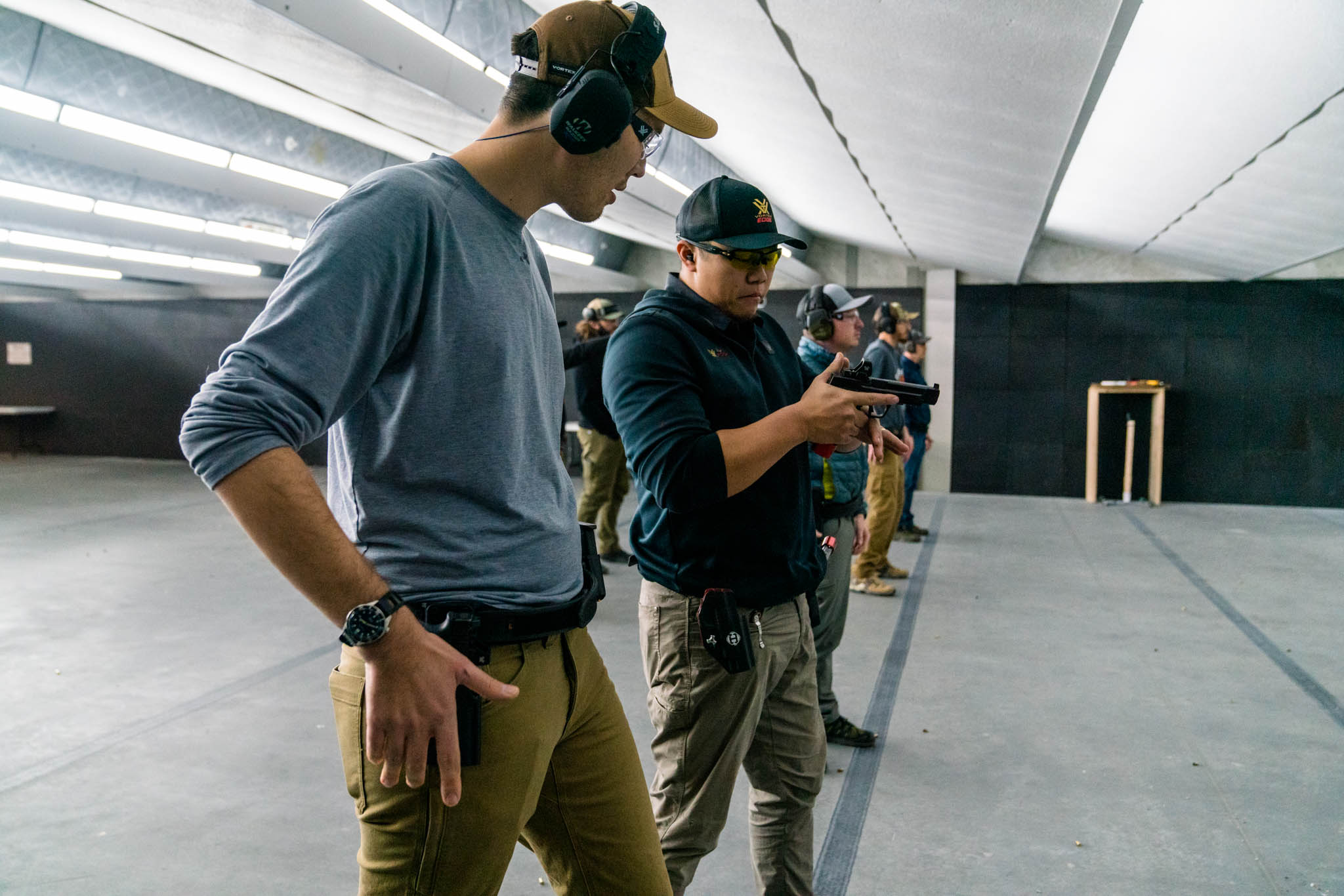
You don’t have to be an expert shooter to take a pistol class, in fact, Kim and Jefferies both suggested it’s the first thing a new shooter should do.
“Local ranges usually offer basic firearms training,” Kim says. He suggests that new shooters find an introductory course that teaches the fundamentals.
I recently took Pistol 101 and 102 at the Vortex Edge facility and would highly recommend them to anyone. Even if you’re an experienced pistol shooter, you’ll get a lot out of drilling the fundamentals.
Dry Fire Drills
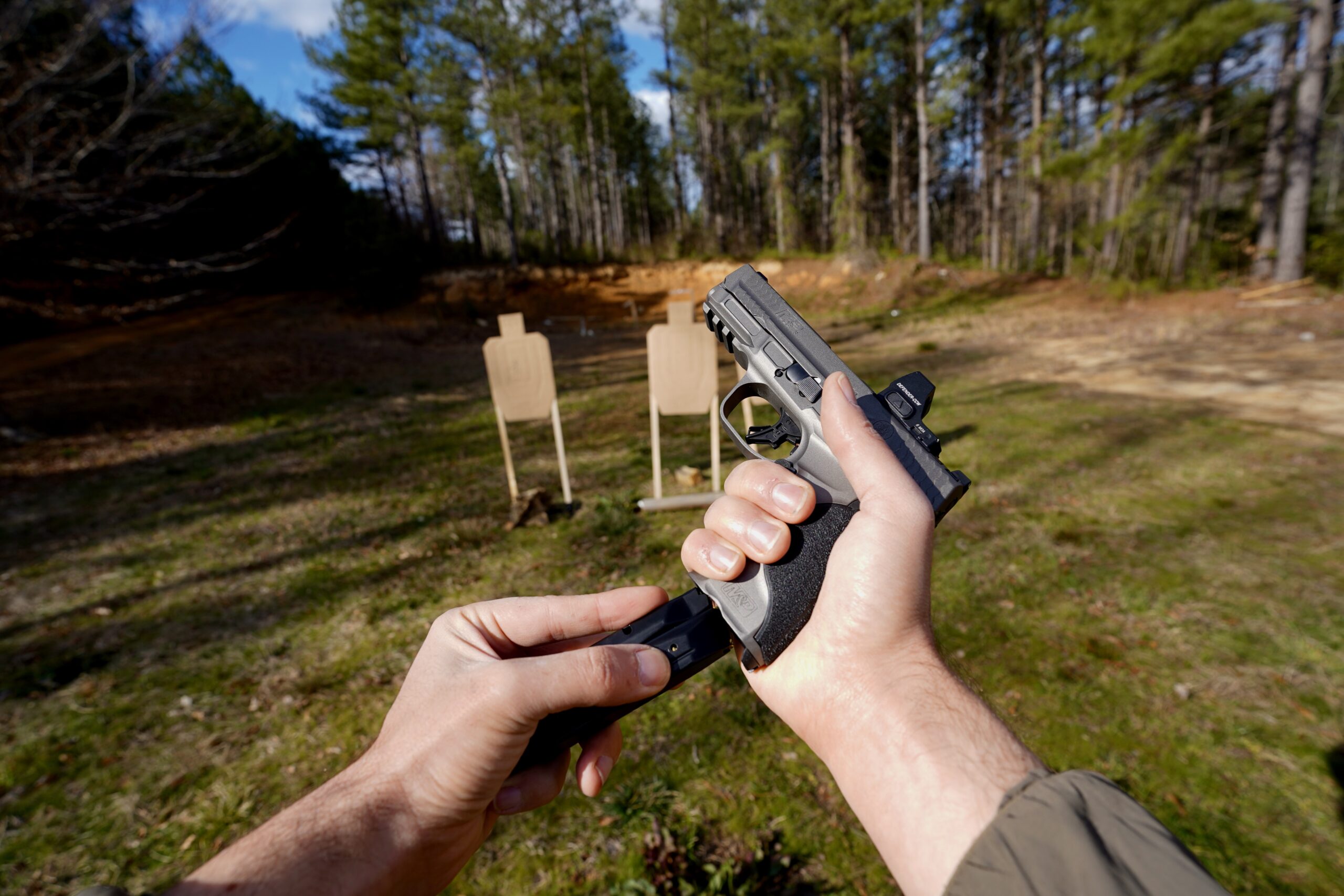
Dry firing is a cost-effective and convenient way to build skills because you can practice every aspect of shooting without ever firing a live round. All you need is an unloaded firearm, a shot timer or shot timer app, and small targets to aim at.
Jefferies suggests working on the basic mechanics of drawing from concealment and reholstering. “You should be able to reholster while keeping your eyes on the threat and be cognizant of your surroundings,” he says. Although some experts might say you should only reholster after there are no more threats and then watch the gun into the holster.
Kim agrees that gun handling is essential, and he has four dry fire drills he recommends.
El Presidente
- Inspect your pistol and magazines to make sure they are unloaded. Kim and Jefferies recommend having magazines that are just for dry fire and loaded with dummy rounds.
- Setup three targets—index cards or scaled dry fire targets work great.
- Face away from the targets.
- Use a shot timer to set a par time. 12 seconds is a good starting point.
- At the buzzer, turn and shoot each target twice.
- Reload
- Then shoot each target again three times.
El Presidente works key firearm handling fundamentals—draw, target transitions, and reloads. Jefferies suggests to push yourself while doing drills, but to also make sure you’re doing each skill with the proper technique. “Don’t train bad habits because you want to go fast,” he says. “Do it the right way and build up in speed.”
Go Stop
The Go Stop Drill requires a larger space, but it can be done with an airsoft gun in a backyard setting.
- Set up a target or an object that represents a target.
- Put cones at 15, 12, and 9 yards from the target.
- Stand at the 15-yard cone. Draw and shoot the target twice.
- Run to the 12-yard position and shoot the target twice.
- Run back to the 15-yard cone and shoot twice. Be aware of your muzzle direction and keep it pointed at the target as you return to the 15-yard mark.
- Run to the 9-yard cone and shoot twice.
- Run to the 15-yard position and shoot twice.
This drill teaches you to move safely with the gun and confirm your sights at different distances. Your finger should be off the trigger, and your gun should be pointed in a safe direction while you’re moving. “When you’re shooting at the 9-foot cone, you don’t have to confirm as much as you do at the 15-yard cone,” Kim says. He says knowing how much you need to focus on your aim is vital to shooting fast and accurately.
“Movement drills are important for concealed carry because you need to be able to move with a gun with your finger off the trigger and barrel pointed away from bystanders while responding to a threat,” Jefferies says.
Wrist Lock Drill
- Use your non-dominant hand to move your dominant hand up and down at the wrist—like a gun recoiling.
- Try to stop the movement by engaging your forearm muscles.
- Once you’ve mastered how to engage your forearm muscles to lock your wrist, try to keep your dominant hand as relaxed as possible while engaging your forearm.
This drill will help you with recoil control. If you use your forearms to lock your wrist while shooting, you’ll see less muzzle rise. “The most effective training is the one that doesn’t require a gun,” Kim says. “My students say this drill is the most helpful to them of all the drills they learn in my class.” He says another easy drill to do is to work on moving your index finger without moving any other part of your hand.
Target Focus Drill
- Look at an object
- Point at it or hold up your hands as if you’re holding a gun
- The object should be in focus and your hand should be blurry
- Sidestep while keeping your finger on the object
“This is called visual guidance training. You can’t look at your fingertip and track the object. You have to look at the object and allow your fingertip to follow it,” Kim says. “Always try to train your vision because target focus is extremely important, especially with a red dot.”
Indoor Range Drill
If you don’t have access to an outdoor range where you can move and shoot multiple targets, Kim recommends the Dot Drill, which is shot at 5 yards and uses a target with six, 2-inch dots–you can download the target online.
- Set the dot drill target at 5 yards
- Use a shot timer with a 5-second par time
- Start from low ready, which is two hands on the gun—finger off the trigger—and the gun pointed just below the target.
- At the buzzer shoot each dot once before the par timer goes off
“This drill challenges all shooting fundamentals,” Kim says. “You’ll work on sight confirmation, trigger control, and recoil management.” You can progress to doing this drill from the holster at 7 yards.
Outdoor Range Drill
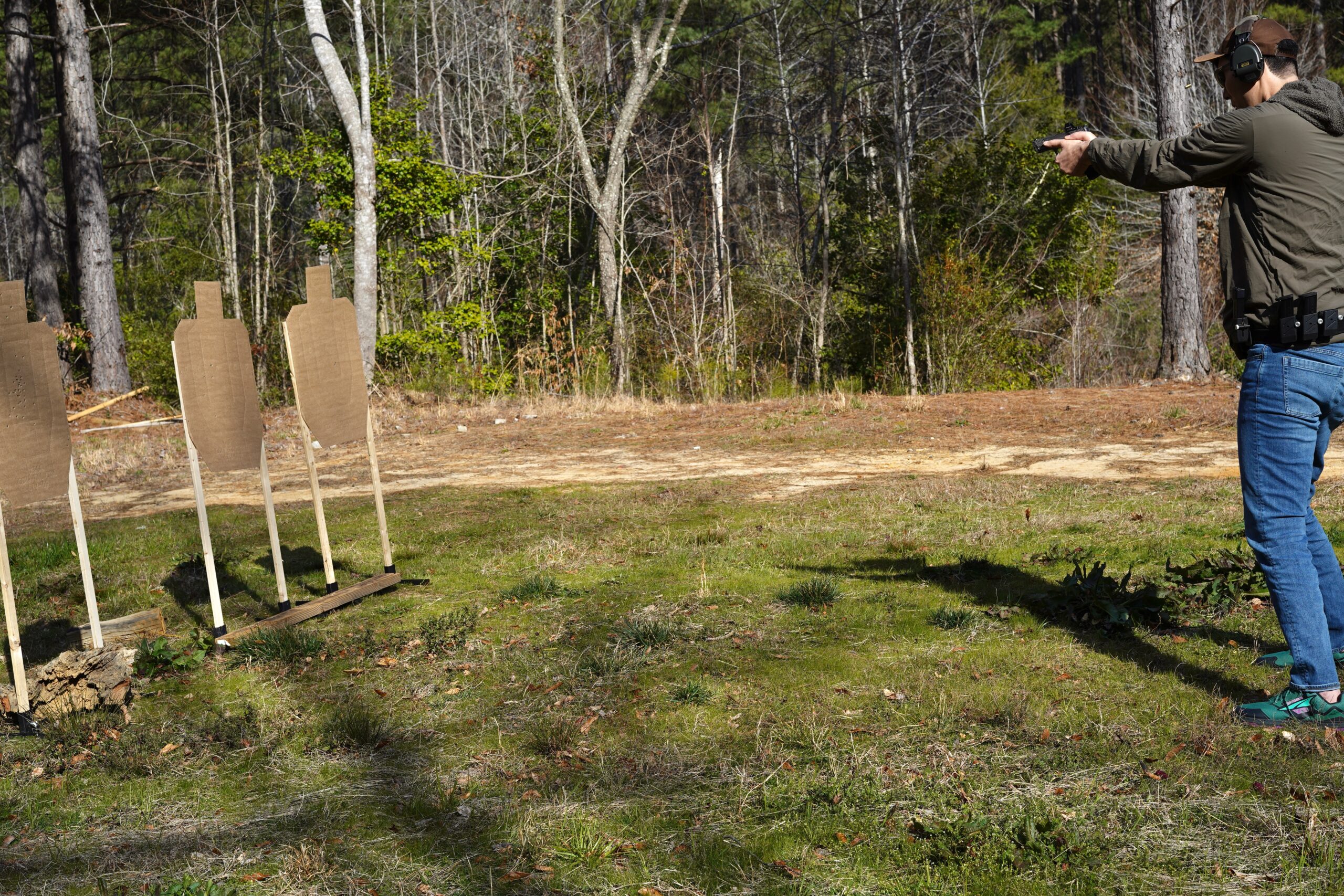
Criss Cross Drill
- Set three targets at 10 yards
- Draw and shoot target one in the A-zone
- Shoot target two in the head box
- Shoot target three in the A-zone
- Reload
- Shoot target one in the head box
- Shoot target two in the A-zone
- Shoot target three in the head box
Kim says you can do this drill as close as 3 yards and out to 20 yards to adjust the difficulty.
Benchmarks
Kim and Jefferies both say that it’s important to push yourself in training. “Goal times will push you to an uncomfortable level, until that time becomes comfortable,” Kim says. “Once you hit your goal time, make sure that you’re doing the skills correctly too.”
He says this is especially important in dry fire where the only confirmation of accuracy is seeing your sight picture.
The Upshot
When experts like Jefferies and Kim speak, I listen. They both say that consistent training is vital to staying proficient with a handgun, and that if you want to test your skills, you should compete.
Jefferies was a competitive shooter on the Secret Service pistol team, and he thinks it was some of the most valuable training. Kim agrees that local matches are an excellent way to practice, but recommends observing a local USPSA match to see what they’re like before signing up. “Watching local matches is free, and that’s actually how I got started,” he says.
About the Vortex Defender CCW
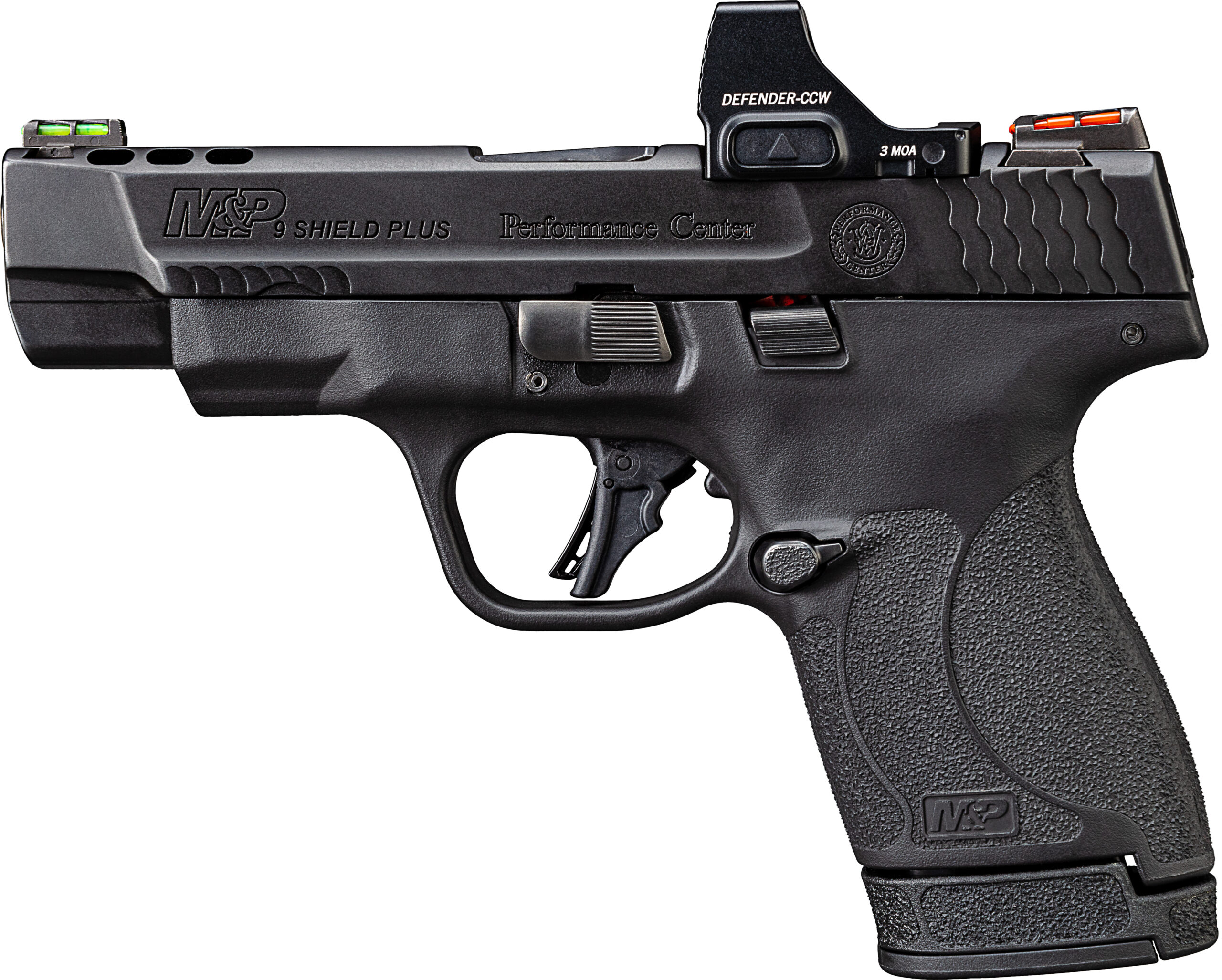
Arm yourself with the red dot specifically built for modern everyday carry. The micro-sized Defender-CCW™ delivers maximum concealment, reliability, and the first-shot quickness you need when facing a threat with nowhere to run. The slim profile means no extra bulk or width for a smoother, no-snag draw from under clothes and less chance of printing, so the only one on the street who knows you’re packing is you. Meant for those who prioritize personal protection, the Defender-CCW™ lets you carry more discreetly, defend faster, and more accurately when life is on the line.
